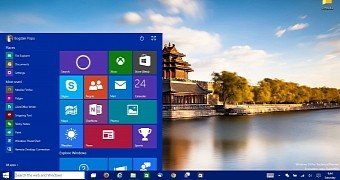Windows 10 is still in the works right now, but as we move closer to the rumored launch of the new OS, more and more pieces of the puzzle seem to find their place on the board, so Microsoft’s strategy for its new software is slowly becoming clearer.
If we put together all rumors that reached the web in the last few weeks and months, it appears that the Windows 10 rollout would take longer than expected because Microsoft is planning a different approach that would keep users fully updated with new features as they become available.
As a result, Windows 10 is just the beginning of a much more important release cycle that would span over the next few years and would include several updates supposed to improve the core platform and help Microsoft become more relevant in the tablet and smartphone market.
RTM, GA, and a first update this year
First and foremost, Windows 10 is expected to move from Technical Preview (TP) to RTM in June. This time, Microsoft might not release a Developer Preview (DP) or a Consumer Preview (CP) of Windows 10, simply because the Windows Insider program includes both of them and anyone who wants to see what this new operating system is all about can download the existing TP builds.
Basically, work on Windows 10 is expected to be completed in June, so that’s the moment when the new operating system is likely to reach RTM.
Secondly, there’s General Availability (GA). According to today’s news, this is likely to happen in late July, but our previous information on this pointed to August. So it’s either July or August for Windows 10, which is just in time to still give Microsoft a chance to benefit from the growing sales during the back-to-school shopping season.
“There’s a two-month gap between RTM and GA that should allow OEMs to prepare their new devices.”
If this is true, Microsoft is aiming at a two-month gap between RTM in GA, which should be enough for manufacturers and partners to prepare their devices powered by Windows 10 before the operating system becomes available for everyone.
Microsoft has already promised that Windows 10’s debut would come with a plethora of new devices, so this schedule does make sense.
After Windows 10 finally becomes available, there’s the first update for the new OS that’s expected to arrive in late 2015. Currently codenamed “Update 1,” this first update won’t bring anything else besides improvements and fixes for the problems that first adopters found after GA.
No major features and changes are planned, but of course this could change if the company completes development of something that’s critical for its users. The first update for Windows 10 is likely to see daylight in October or November.
Former CEO Steve Ballmer is still excited about Windows 10 and says he's sure that Microsoft would get this one right.
Redstone coming next year
Even though 2015 seems to be a very busy year for Microsoft, the company’s not going to stop here to make Windows 10 better.
Next year, Microsoft is projected to release the very first major update for Windows 10, currently codenamed Redstone, which is very likely to include both new features and plenty of improvements for the core operating system.
Redstone is projected to ship in two different waves and Microsoft could give each of them a different name to make a better difference between them. At the same time, Redstone could be the first update for Windows 10 that could actually help Microsoft step away from a numbering system for Windows and bring only major updates instead of stand-alone releases every three years.
During this whole time, the Windows Insider program will continue to be available, as Microsoft wants to develop every single update for the OS together with its users.
In the meantime, Windows 10 remains work in progress, so if you’d like to see what’s to come for your PC, tablet, or smartphone, register for the Windows Insider program here and give the new OS a try right now.

 14 DAY TRIAL //
14 DAY TRIAL //